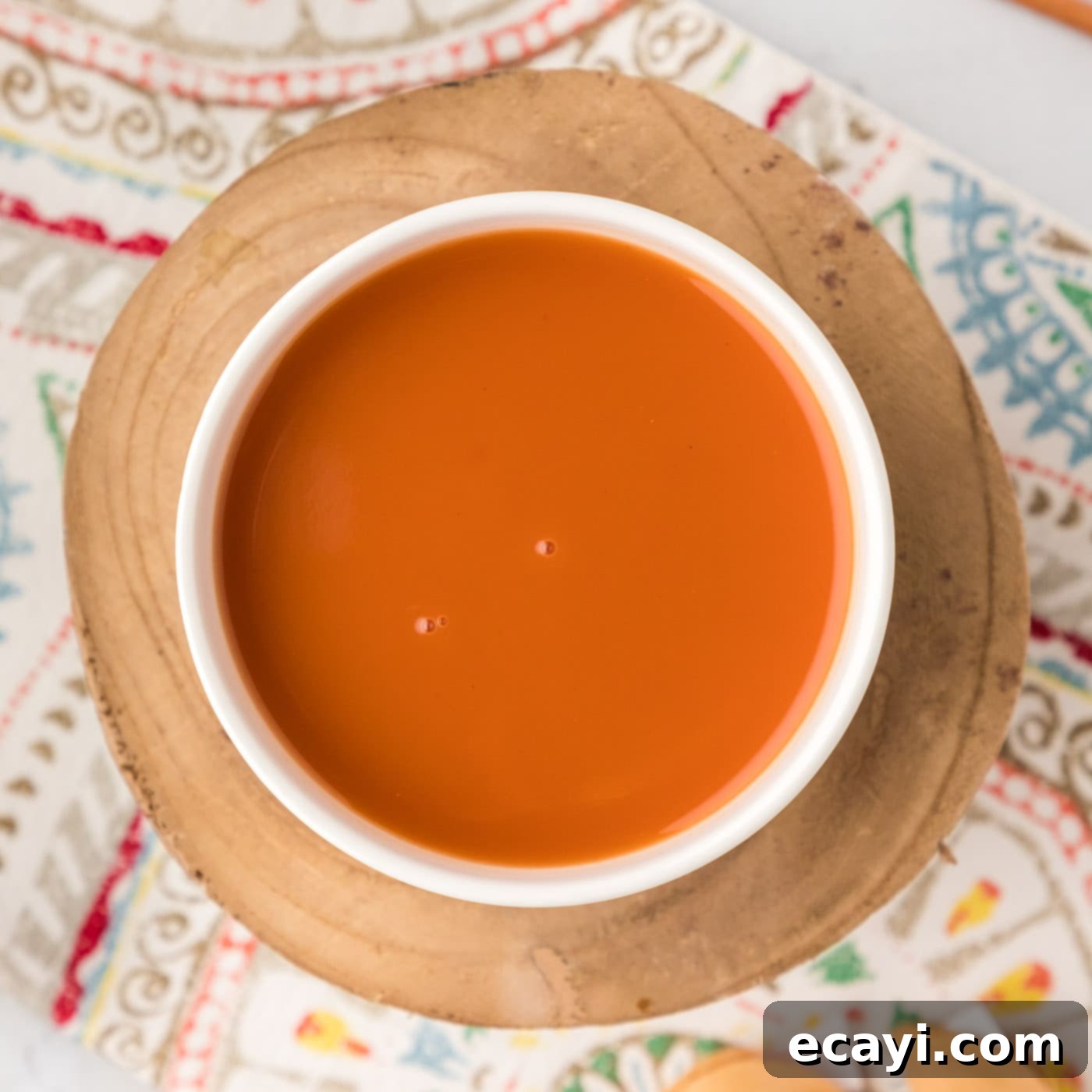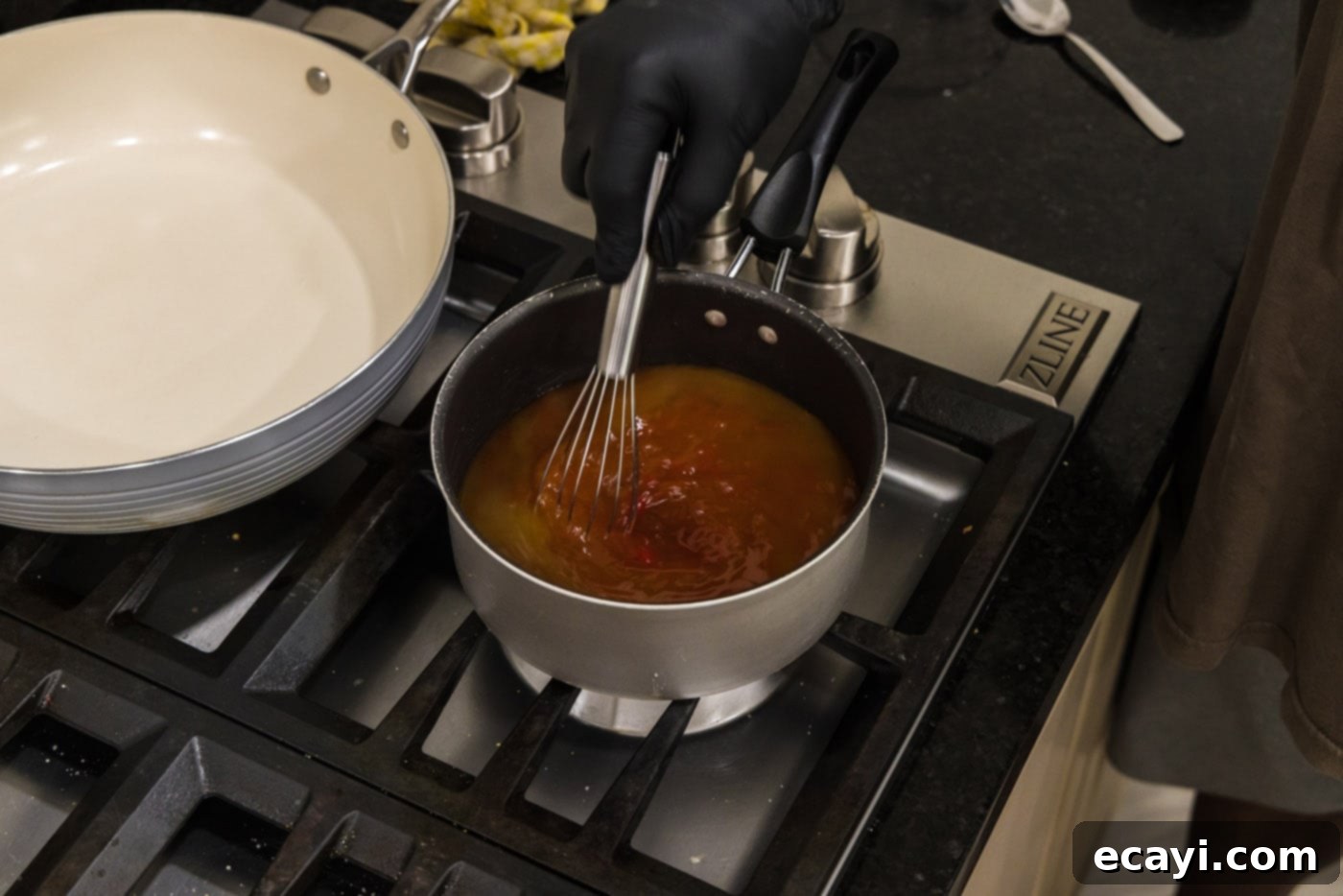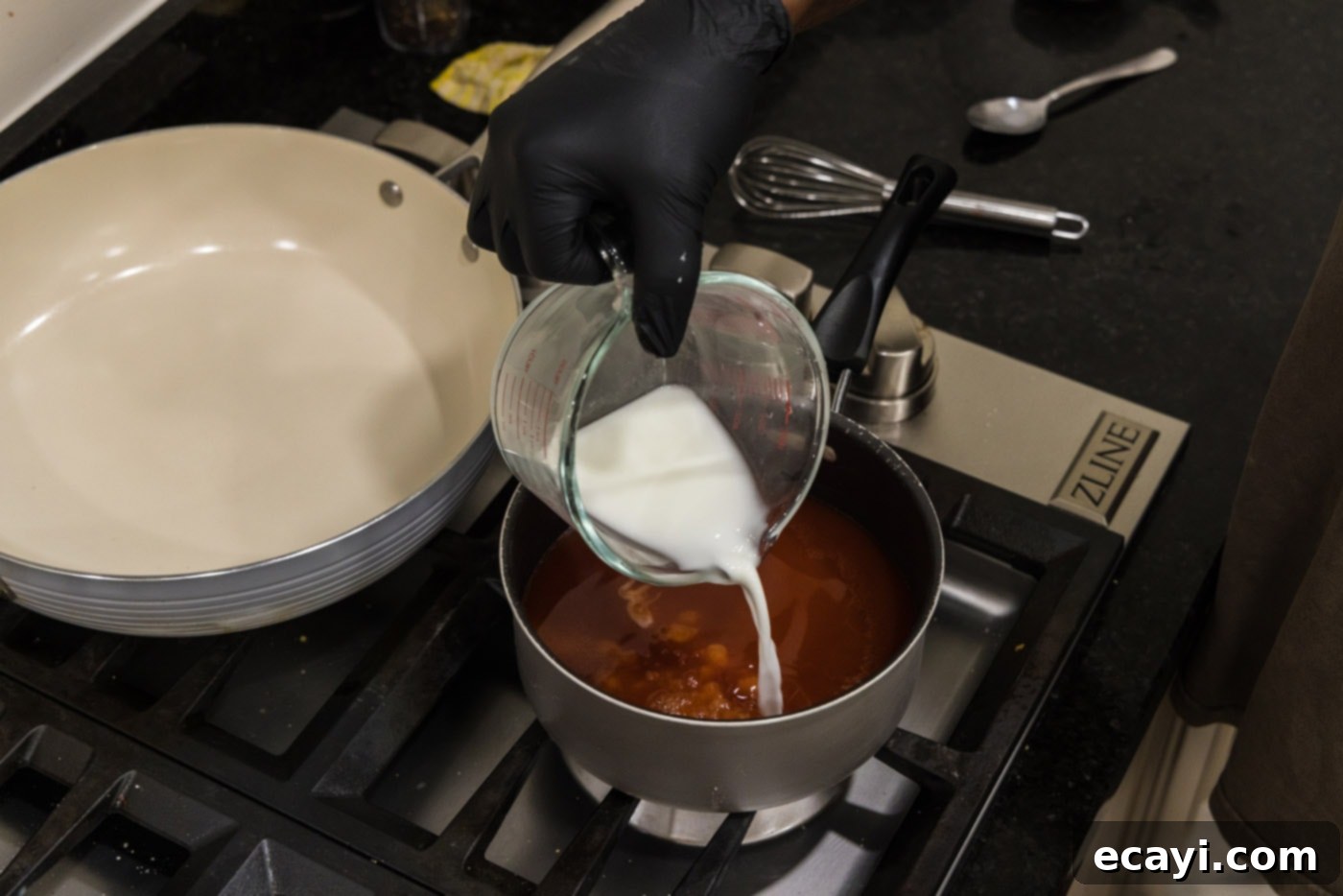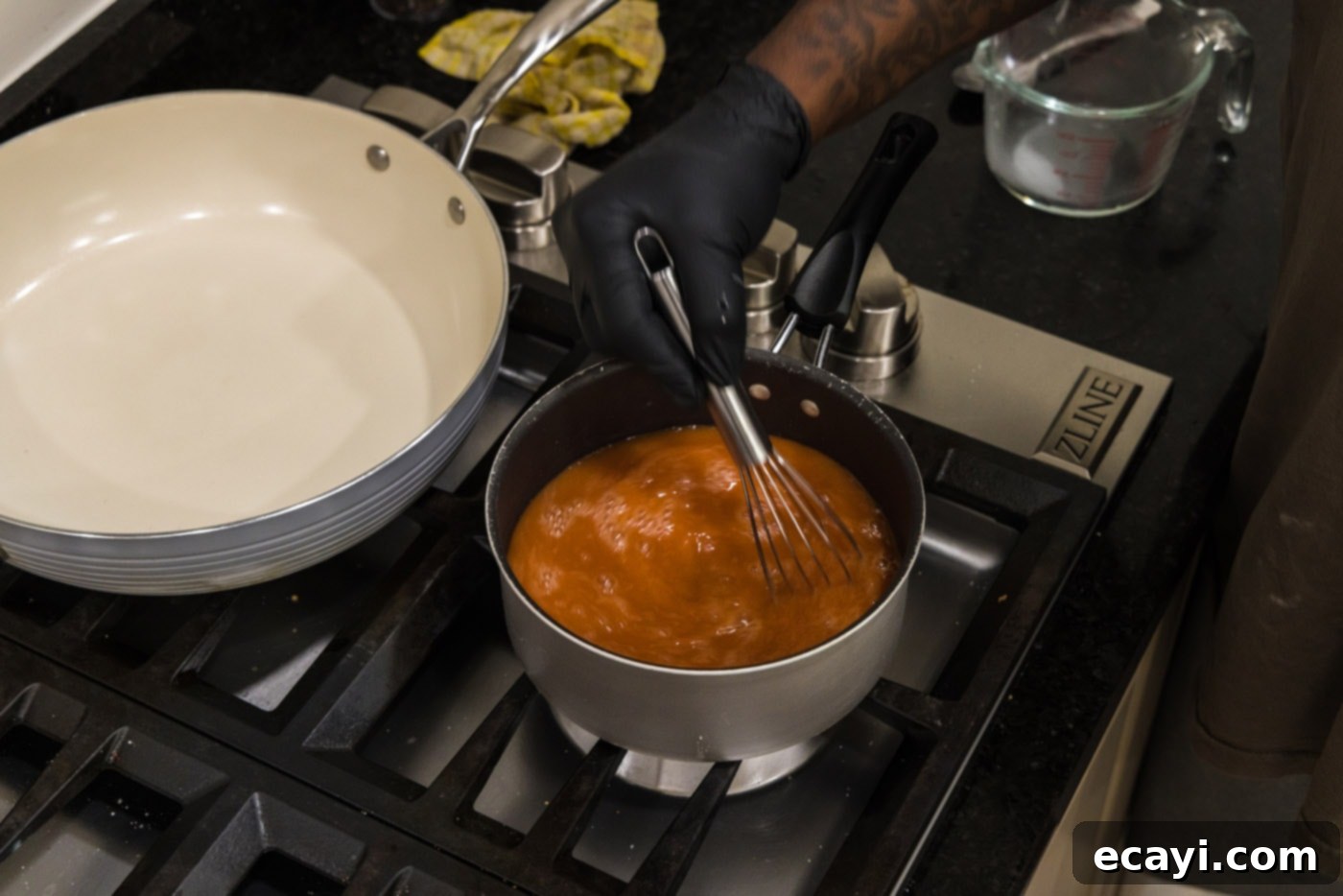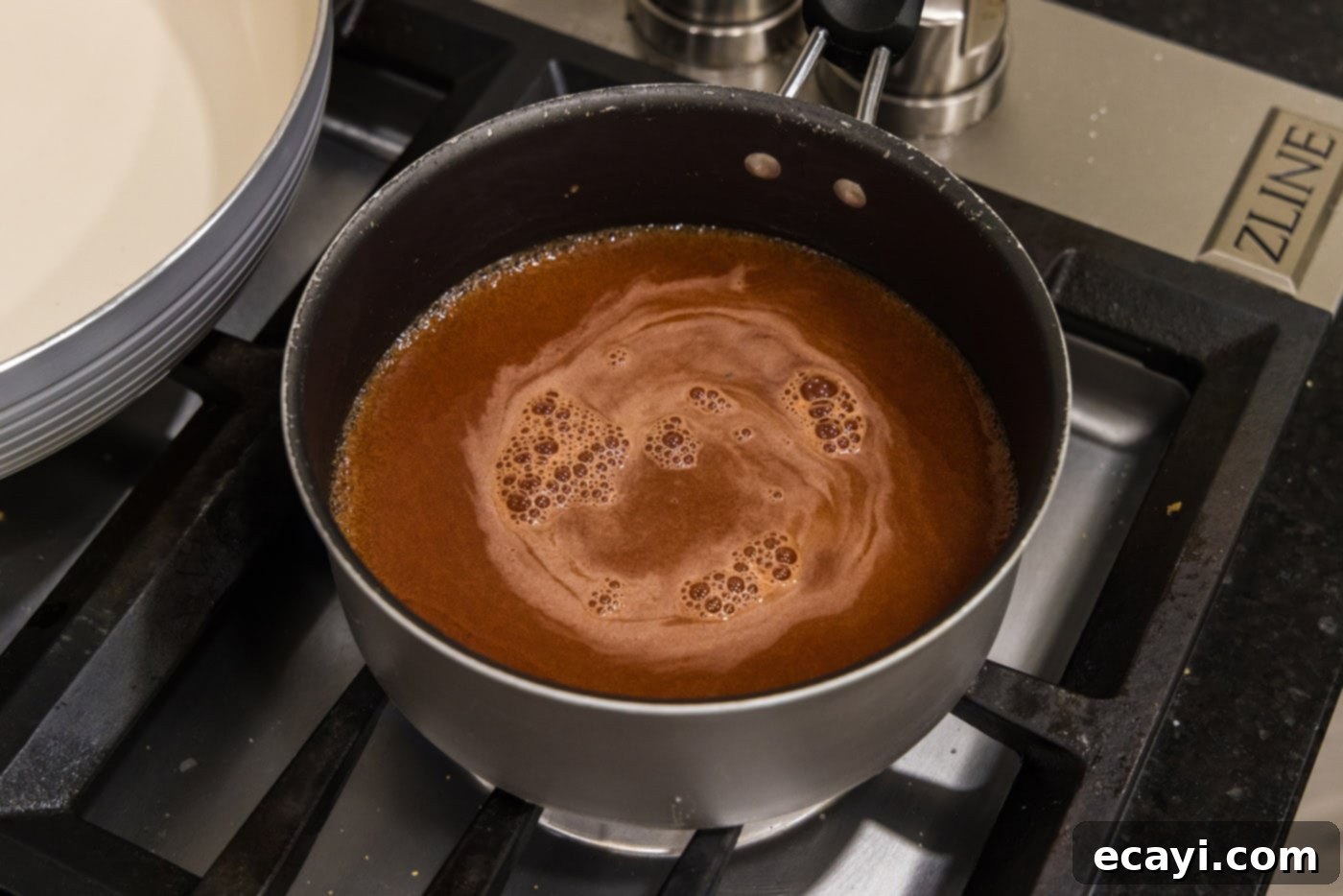Best Homemade Sweet and Sour Sauce Recipe: Easy, Tangy, and Universally Delicious
Elevate your favorite Asian-inspired dishes and beyond with this incredible homemade sweet and sour sauce recipe. Forget the store-bought versions laden with artificial ingredients and corn syrup; crafting your own vibrant, perfectly balanced sauce is surprisingly simple and incredibly rewarding. In just minutes, you can create a luscious, tangy, and sweet condiment that will transform everything from crispy chicken and succulent pork to fresh seafood, savory egg rolls, and even your humble french fries. This recipe is designed for ultimate ease, requiring only a quick whisking of common pantry staples in a single saucepan, delivering an authentic flavor that’s far superior to anything you’ll find on a supermarket shelf. Get ready to dip, drizzle, and delight in the unparalleled taste of truly homemade goodness that will impress family and friends alike.
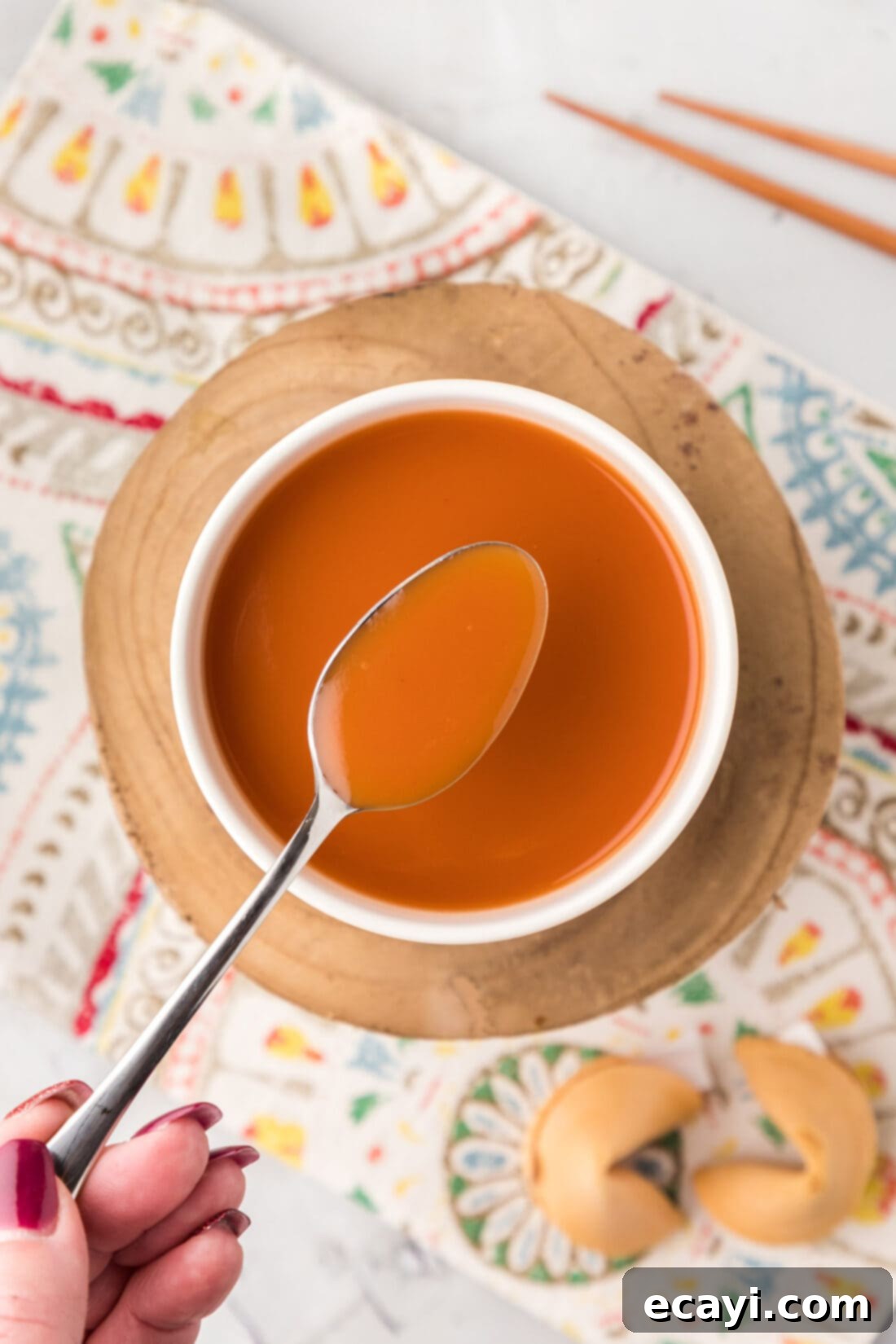
Why This Easy Sweet and Sour Sauce Recipe Works Wonders
The enduring appeal of sweet and sour sauce lies in its remarkable versatility and the delightful contrast of its primary flavors. This isn’t just a dipping sauce; it’s a culinary chameleon that can elevate an astonishing array of dishes. Imagine succulent sweet and sour shrimp, perfectly glazed chicken wings, tender pork, or even a simple bowl of steamed rice, all brought to life with a generous coating or drizzle of this vibrant condiment. It’s also fantastic on crispy spring rolls, savory egg rolls, crispy wontons, and unexpectedly delicious as a dip for french fries or crispy chicken nuggets. The possibilities truly are limitless, extending to stir-fried vegetables, pan-seared tofu, and even as a unique salad dressing component.
What makes this particular homemade sweet and sour sauce recipe stand out is the masterful, yet simple, blend of fundamental flavors. We combine the rich, natural sweetness of honey with the deep umami notes of soy sauce. Tomato paste provides a subtle savory base and a beautiful reddish hue, while pineapple juice introduces a bright, tangy sweetness that is unmistakably characteristic of classic sweet and sour cuisine. Finally, rice vinegar adds that essential acidic counterpoint, creating a symphony of flavors that dances on your palate. This homemade version surpasses its commercial counterparts by offering fresh, pronounceable ingredients and a customizable flavor profile, allowing you to control the exact balance of sweet and sour to suit your personal preference. It’s quick to prepare, economical, and delivers restaurant-quality taste right to your kitchen, making it an essential sauce to master for any home cook.
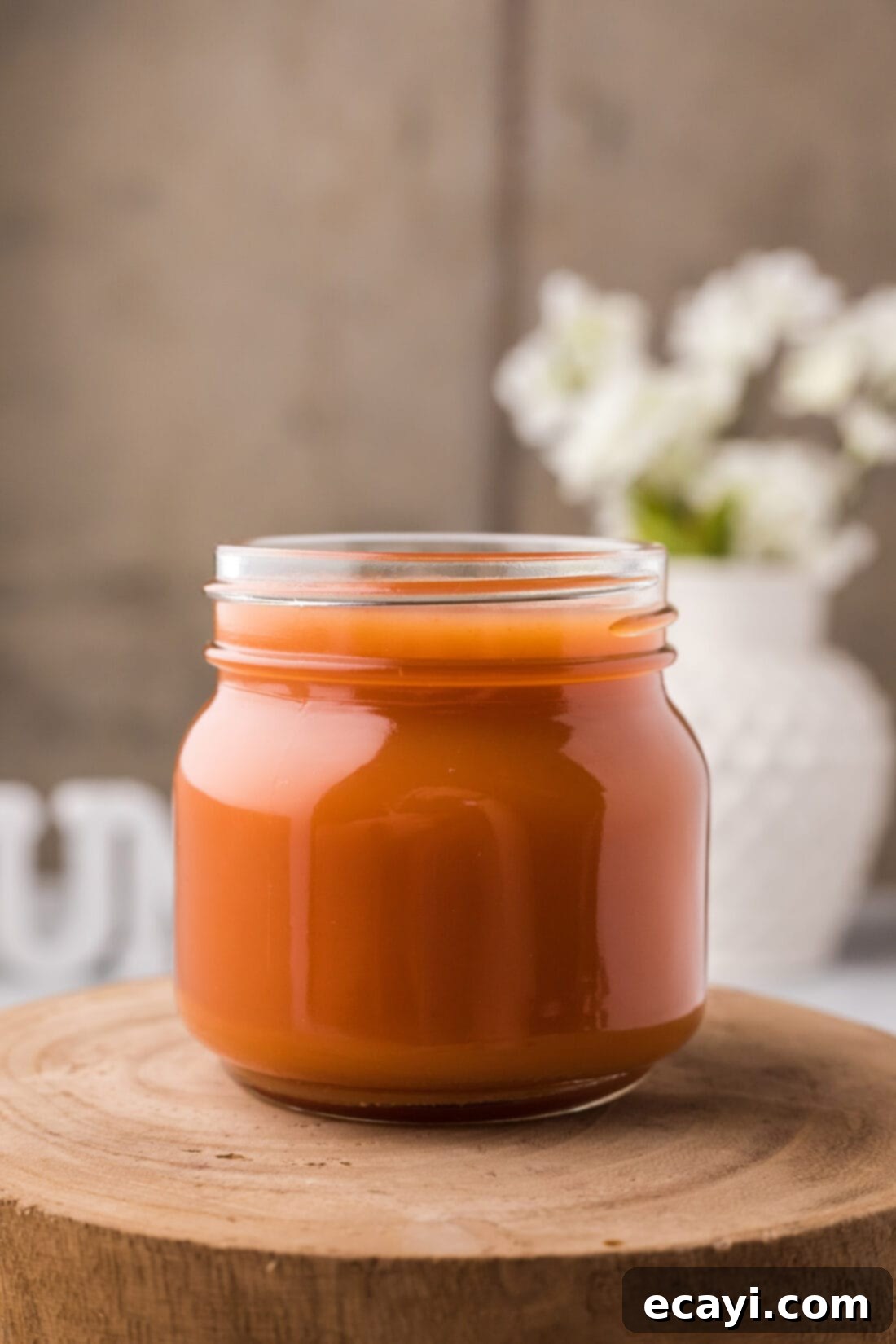
Key Ingredients for Your Homemade Sweet and Sour Sauce
Before you dive into crafting this delightful homemade sweet and sour sauce, gather these simple ingredients. Most are likely already staples in your pantry, making this recipe incredibly convenient to whip up anytime. For precise measurements and the full printable recipe, scroll down to the detailed recipe card at the end of this post.
- Honey: This provides a beautiful natural sweetness and a lovely golden-brown tint to the sauce, contributing to its rich flavor profile.
- Soy Sauce: Essential for adding depth, savory umami, and a perfectly balanced saltiness that rounds out the flavors.
- Tomato Paste: Contributes a rich, concentrated tomato flavor, a subtle savory foundation, and helps achieve the sauce’s characteristic reddish-orange color.
- Pineapple Juice: Crucial for that signature tangy and sweet fruit flavor that is a hallmark of authentic sweet and sour sauce. Canned pineapple juice works perfectly here.
- Rice Vinegar: The key sour component, offering a mild, slightly sweet acidity that brightens the entire sauce without being overpowering.
- Cornstarch: Used to create a slurry that thickens the sauce to the perfect, glossy consistency.
- Water: Primarily used for creating the cornstarch slurry, ensuring it dissolves smoothly before being added to the hot sauce.
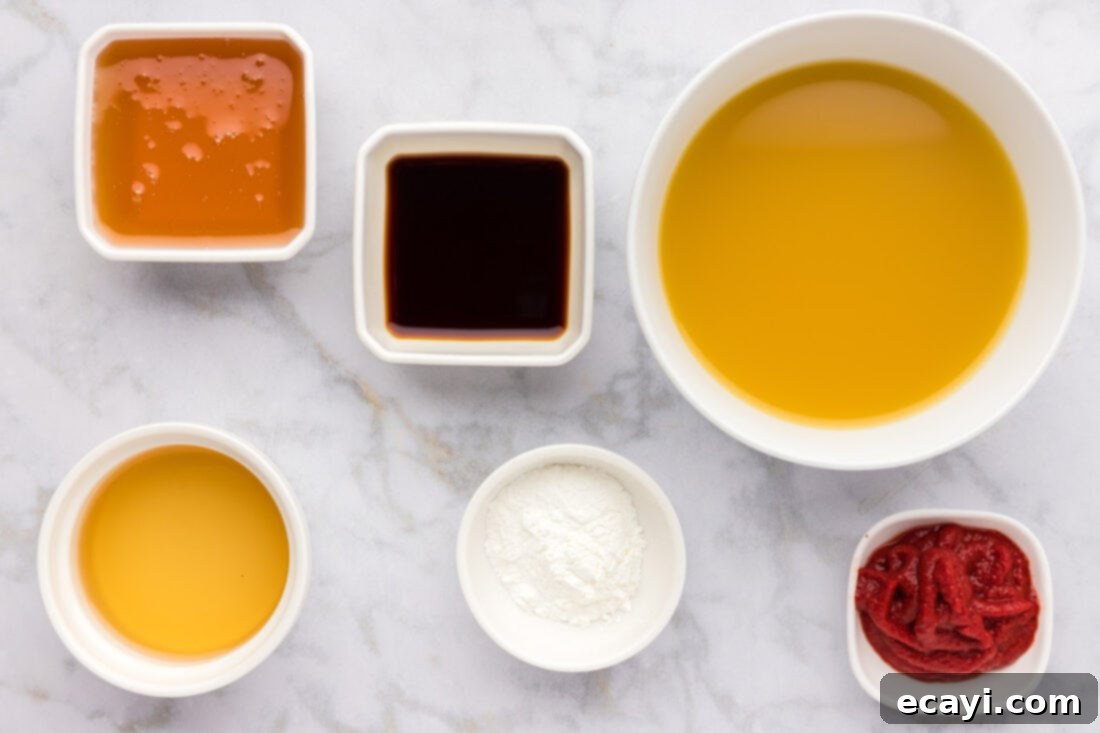
Ingredient Information and Smart Substitution Suggestions
Understanding your ingredients and knowing when and how to make substitutions can greatly enhance your cooking experience. Here’s a closer look at the key components of this sweet and sour sauce recipe and some helpful alternatives:
VINEGAR: Our recipe champions rice vinegar for its mild, slightly sweet acidity, which is ideal for achieving the authentic flavor profile of this sauce. It’s less harsh than other vinegars and integrates beautifully with the other ingredients. However, if rice vinegar isn’t available, you have other options. Red wine vinegar can be used for a slightly bolder, fruitier tang, which some might prefer for a deeper flavor. Alternatively, apple cider vinegar provides a distinctly fruity and sharper acidity. While both are viable substitutes, be aware that they will subtly alter the overall flavor of your sweet and sour sauce. If using these, you might start with slightly less and adjust to taste.
TOMATO PASTE: We strongly recommend sticking with tomato paste for this recipe. Its concentrated tomato flavor provides a robust, savory base without adding excessive sweetness, allowing the honey and pineapple juice to shine as the primary sweet components. This balance is crucial for a well-rounded sauce. If you find yourself in a pinch and absolutely must substitute, ketchup can be used. However, be aware that ketchup contains significantly more sugar, vinegar, and other seasonings, which will make your sauce sweeter, potentially tangier, and give it a different overall flavor profile. If opting for ketchup, you might want to slightly reduce the amount of honey or pineapple juice in the recipe to maintain a desirable flavor balance and prevent the sauce from becoming overly sweet.
PINEAPPLE JUICE: This ingredient is crucial, as it provides both the essential tartness and the signature tropical sweetness that defines classic sweet and sour sauce. For the best and most consistent results, we recommend using canned pineapple juice, as it tends to have a more uniform flavor and acidity compared to fresh juice which can vary. If pineapple juice is absolutely unavailable, lime juice or even orange juice can serve as a last-resort substitute, offering acidity and a fruity note. However, these juices lack the inherent sweetness and unique flavor of pineapple. If you use lime juice, you will almost certainly need to compensate by adding an extra teaspoon or two of honey or granulated sugar to balance the flavors and prevent the sauce from becoming overly tart or one-dimensional. The distinct pineapple flavor is a hallmark of this sauce, so it’s always worth seeking out if possible.
Step-by-Step: How to Make Easy Homemade Sweet and Sour Sauce
These step-by-step photos and instructions are here to help you visualize how to make this recipe. You can Jump to Recipe to get the printable version of this recipe, complete with precise measurements and instructions at the bottom of this post.
- Combine and Heat the Base Ingredients: In a medium saucepan, combine all your liquid and flavor ingredients: honey, soy sauce, tomato paste, pineapple juice, and rice vinegar. Using a whisk, blend them together thoroughly until the tomato paste is fully dissolved and the mixture is smooth. Place the saucepan over medium-high heat and bring the mixture to a gentle boil, stirring occasionally. This crucial step allows all the flavors to meld beautifully and ensures the sauce is ready for thickening. Do not let it boil rapidly for too long before adding the slurry.

- Thicken with a Cornstarch Slurry: While your sauce is coming to a boil, prepare your cornstarch slurry. In a separate small bowl, whisk together the cornstarch and cold water until completely smooth and no lumps remain. This slurry is the secret to achieving the perfect thick and glossy consistency for your sweet and sour sauce. Once the sauce in your saucepan is boiling gently, slowly pour in the cornstarch slurry while continuously whisking. Reduce the heat to medium and continue to simmer for about 2-4 minutes, or until the sauce visibly thickens to your desired consistency. Keep whisking to prevent any sticking to the bottom of the pan and to ensure even thickening. Remember that the sauce will continue to thicken even further as it cools, so keep that in mind when judging its final texture.



Frequently Asked Questions & Expert Tips for Perfect Sweet and Sour Sauce
Proper storage is essential for extending the life of your delicious homemade sweet and sour sauce. Once the sauce has cooled completely to room temperature, transfer it to an airtight container, such as a glass mason jar with a tight-fitting lid or a sealed plastic container. Store it in the refrigerator, where it will remain fresh, flavorful, and safe to consume for up to 2 months. This makes it an excellent make-ahead condiment for busy weeks! For even longer storage, you can freeze it in smaller, individual portions in freezer-safe bags or containers for up to 6 months. When ready to use, thaw in the refrigerator overnight before reheating gently on the stovetop, whisking well to restore its smooth consistency.
The signature reddish-orange hue of sweet and sour sauce typically comes from the inclusion of specific ingredients. In our recipe, **tomato paste** is primarily responsible for imparting that appealing subtle red tint, along with adding a savory depth of flavor. Other recipes or commercial brands might use **ketchup**, which also contributes a reddish color and a sweeter, more processed tomato flavor. In some restaurant preparations, a small amount of **red food coloring** might be added to achieve a more vivid and uniform hue, though we prefer to rely on natural ingredients for both color and taste in our homemade version. Our use of tomato paste provides the perfect balance of visual appeal and robust flavor without any artificial additives.
The traditional and most effective method for thickening sweet and sour sauce is by using a **cornstarch slurry**. This is a simple mixture of cornstarch dissolved in cold water, which, when added to a hot liquid, cooks and creates a smooth, glossy, and thick consistency. It’s crucial to add the slurry slowly while whisking continuously to prevent any lumps from forming. Remember that the sauce will continue to thicken slightly as it cools. If, after adding the initial slurry and simmering for a few minutes, your sauce isn’t as thick as you desire, you can always create a second, smaller slurry. Mix 1/2 tablespoon of cornstarch with 2 tablespoons of cold water, then gradually add this to the simmering sauce, whisking constantly, and cook for another minute or two until the perfect texture is achieved. A key expert tip: never add dry cornstarch directly to hot liquid, as it will clump and not dissolve properly.
Absolutely! This recipe is inherently vegetarian as written. To make it completely vegan, simply substitute the honey with an equal amount of maple syrup or agave nectar. Both alternatives provide a similar sweetness profile and will work beautifully in the sauce. Additionally, always ensure that your choice of soy sauce is a vegan variety if you have strict dietary restrictions (most standard soy sauces are vegan, but it’s always good practice to check labels for any unexpected animal-derived ingredients if you are concerned).
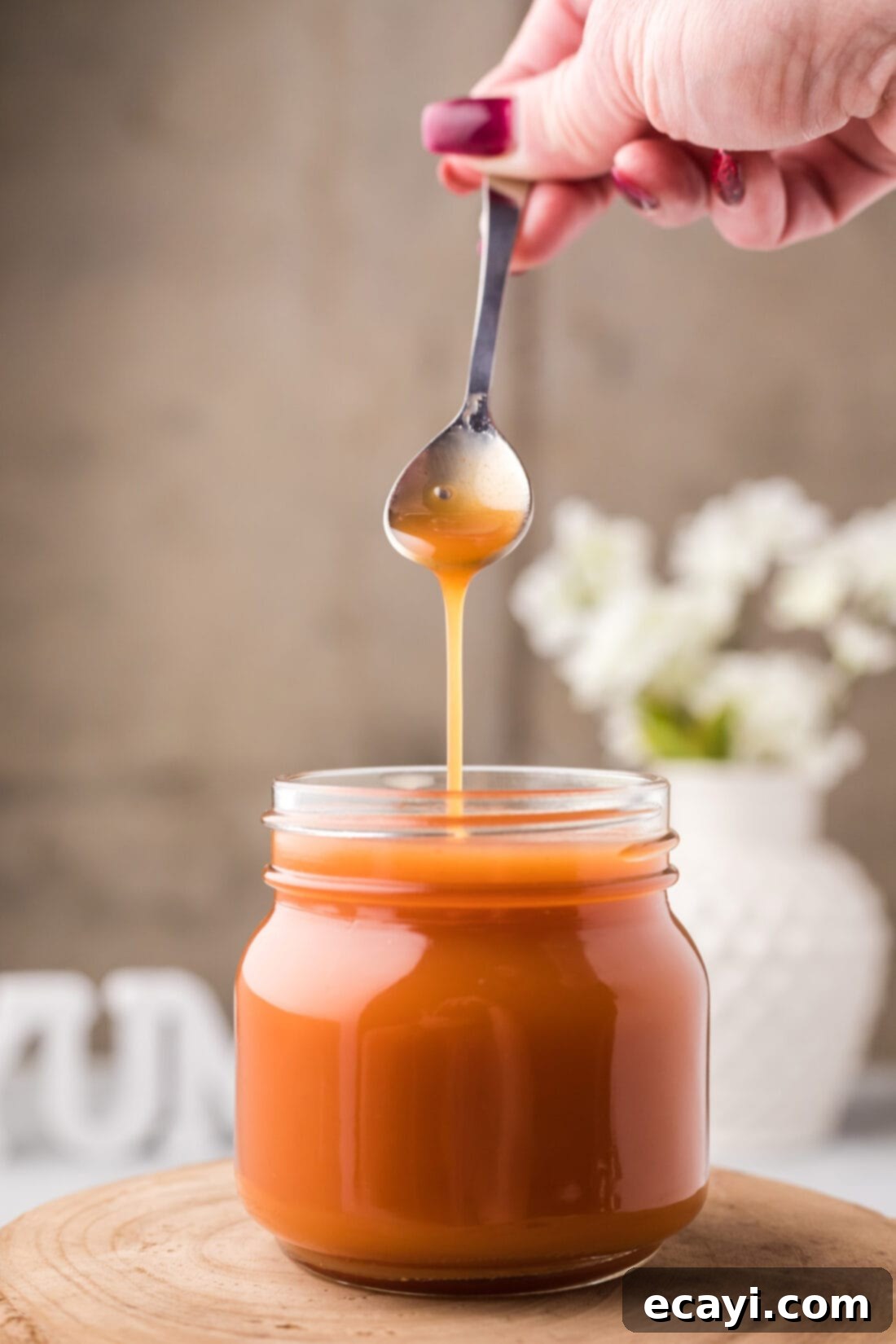
Creative and Delicious Serving Suggestions
The versatility of this homemade sweet and sour sauce truly knows no bounds, making it a fantastic and flavorful addition to countless meals and snacks. Here are some of our favorite ways to enjoy it:
- Main Course Glaze: Transform plain cooked proteins into a flavorful feast. Pour the warm sweet and sour sauce over pan-fried, baked, or grilled chicken breasts, crispy pork chunks, tender meatballs (chicken, pork, or beef), or plump shrimp. Toss gently in a skillet or serving bowl until everything is evenly coated and glistening. This works wonderfully when added to stir-fried vegetables like crisp bell peppers, tender broccoli florets, and snappy snap peas for a complete and vibrant meal.
- Dipping Delight: This sauce is a quintessential dipping companion. Serve it generously alongside crispy appetizers such as homemade crab rangoon, savory egg rolls, fresh spring rolls, or even potstickers and dumplings. It’s also a surprisingly delicious dunker for everyday snacks like golden french fries, crispy chicken strips, or air fryer chicken nuggets, adding a gourmet twist to simple pleasures.
- Flavorful Addition to Grains: Drizzle a generous amount over a bowl of fluffy white rice, nutty brown rice, or even quinoa to infuse every bite with its signature sweet and tangy flavor. It’s also excellent mixed into a simple fried rice dish, adding an extra layer of taste and moisture.
- Creative Culinary Uses: Think beyond the typical! Thin the sauce slightly with a touch of water or extra pineapple juice, and it can become a unique and zesty salad dressing for a refreshing change. You can also use it as a quick marinade for poultry or pork before grilling or baking, imparting both flavor and tenderness. It’s also fantastic on vegetarian options like tofu stir-fries or roasted root vegetables, making them truly irresistible.
More Delightful Asian-Inspired Recipes
If you loved making this versatile homemade sweet and sour sauce, you’ll be thrilled to explore more of our favorite Asian-inspired and sauce recipes. These dishes pair perfectly with your freshly made sauce or offer equally delicious homemade alternatives to expand your culinary repertoire:
- Orange Chicken
- Hunan Chicken
- Pork Fried Rice
- Sweet and Sour Chicken
- Homemade Teriyaki Sauce
I love to bake and cook and share my kitchen experience with all of you! Remembering to come back each day can be tough, that’s why I offer a convenient newsletter every time a new recipe posts. Simply subscribe and start receiving your free daily recipes!

Sweet and Sour Sauce
IMPORTANT – There are often Frequently Asked Questions within the blog post that you may find helpful. Simply scroll back up to read them!
Print It
Pin It
Rate It
Save ItSaved!
Ingredients
- 4 Tablespoons honey
- 3 Tablespoons soy sauce
- 2 ½ Tablespoons tomato paste
- 1 cup pineapple juice
- 3 Tablespoons rice vinegar
- 1 Tablespoon cornstarch
- ¼ cup water
Things You’ll Need
-
Saucepan
-
Whisk
Before You Begin
- Pour sweet and sour sauce over cooked chicken, pork, meatballs, shrimp, or vegetables in a skillet and toss to combine.
- Store sweet and sour sauce in an airtight container (like a jar) in the refrigerator for up to 2 months.
- We use rice vinegar in our sweet and sour sauce for authentic flavor, but you can also use red wine vinegar or apple cider vinegar as substitutes if needed.
- I would suggest sticking to tomato paste for the best flavor balance; however, you can use ketchup in your sauce if you prefer, keeping in mind it will be sweeter.
Instructions
-
In a medium saucepan, combine honey, soy sauce, tomato paste, pineapple juice, and rice vinegar. Whisk together until smooth, then bring to a gentle boil over medium-high heat.
-
In a small separate bowl, whisk together the cornstarch and water to create a smooth slurry. Slowly pour the slurry into the boiling sauce while continuously whisking. Reduce heat to medium and simmer for 2-4 minutes, or until the sauce has thickened to your desired consistency. Remove from heat and serve warm, or allow to cool before storing.
Nutrition Information
The recipes on this blog are tested with a conventional gas oven and gas stovetop. It’s important to note that some ovens, especially as they age, can cook and bake inconsistently. Using an inexpensive oven thermometer can assure you that your oven is truly heating to the proper temperature. If you use a toaster oven or countertop oven, please keep in mind that they may not distribute heat the same as a conventional full sized oven and you may need to adjust your cooking/baking times. In the case of recipes made with a pressure cooker, air fryer, slow cooker, or other appliance, a link to the appliances we use is listed within each respective recipe. For baking recipes where measurements are given by weight, please note that results may not be the same if cups are used instead, and we can’t guarantee success with that method.
